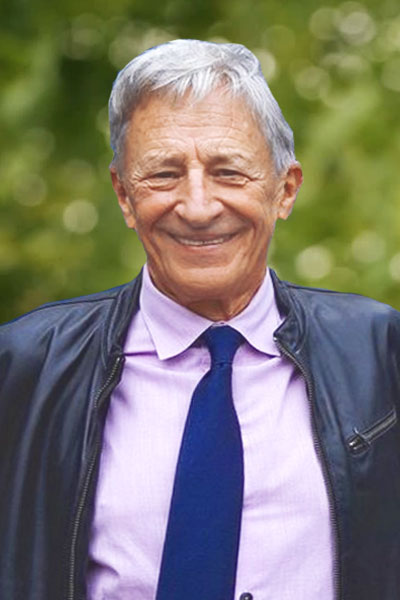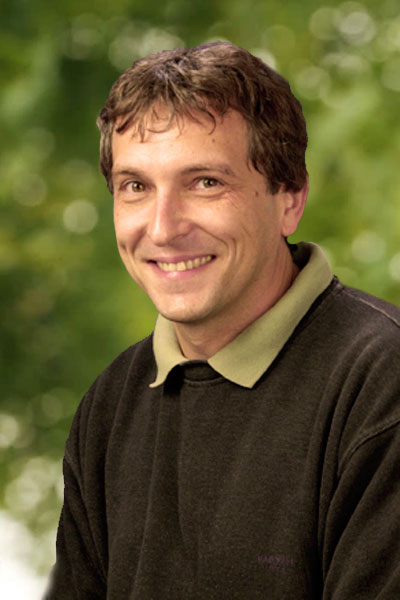Xinshu Grace Xiao
Xinshu Grace Xiao
Professor
Director of Bioinformatics Interdepartmental Ph.D. Program
Maria Rowena Endowed Chair in Biological Sciences
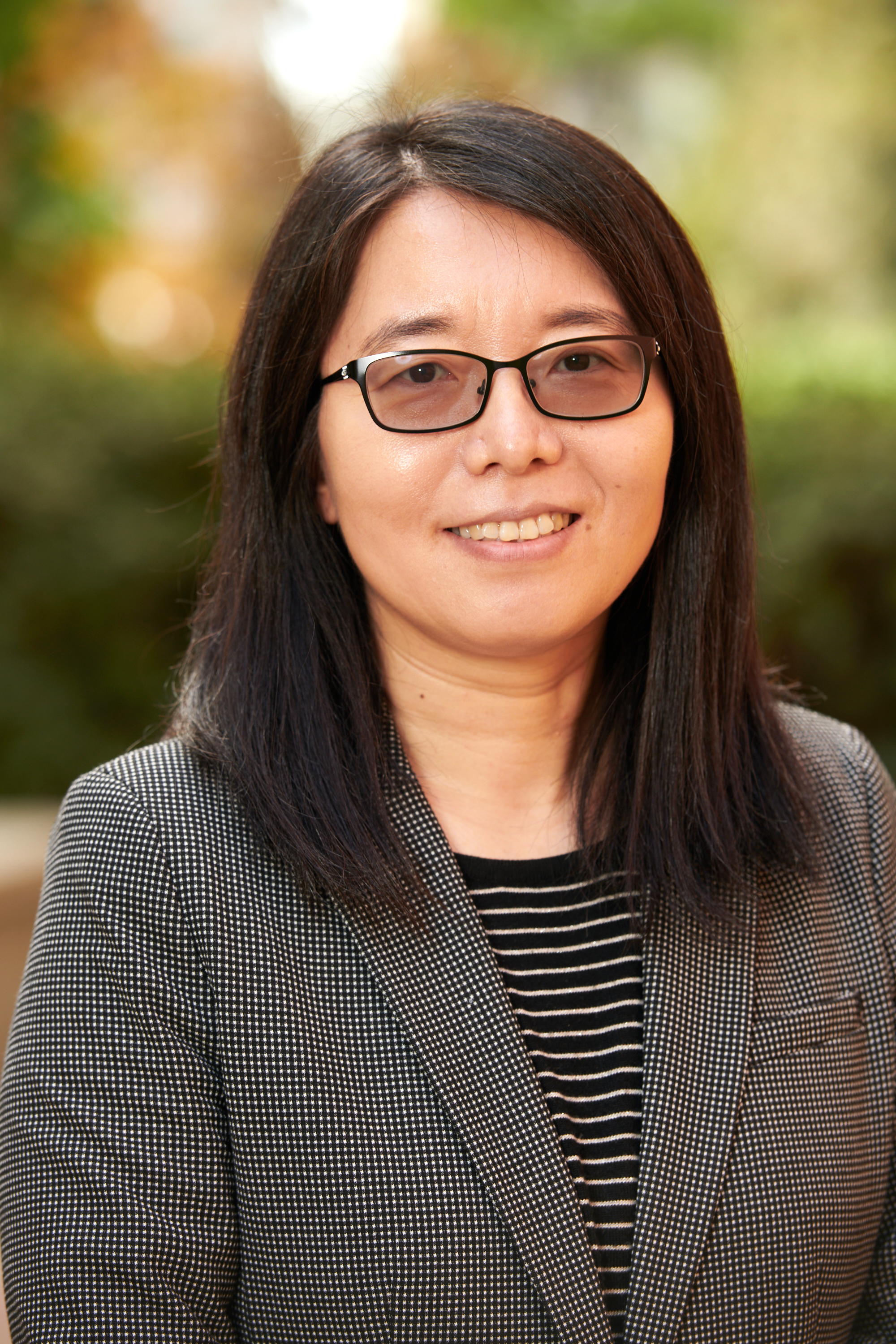
Email: gxxiao@ucla.edu
Office: 2000E TLSB
Phone: (310) 206-6522
Website: https://www.xiao-lab.org/
Biography
Dr. Xinshu (Grace) Xiao received her B.S. degree at Tsinghua University, Beijing, China. She then went to the Massachusetts Institute of Technology (MIT) for graduate studies. After receiving her Ph.D degree in the Division of Health Sciences and Technology (HST), a joint program by MIT and Harvard Medical School, Dr. Xiao continued at MIT for postdoctoral training in the Department of Biology. In 2008, Dr. Xiao joined the faculty at the University of California, Los Angeles. She is now the Maria R. Ross Endowed Professor of the Department of Integrative Biology and Physiology. She also serves as the Director of the Bioinformatics Interdepartmental Program.
Research Interests
Research in the Xiao lab aims to better understand transcriptome complexity in health and disease. A major surprise resulted from the Human Genome Project was that humans, even though as an apparently much complex organism with 100 trillion cells, have only 25,000 to 30,000 genes. In contrast, the roundworm, an organism with 960 cells, has ~19,000 genes. The number of genes does not scale proportionally with biological sophistication. Instead, the transcriptome (the collection of RNA molecules expressed from genes) in higher organisms is closely regulated such that one gene may produce different transcript isoforms in a cell type and developmental stage-specific manner. The Xiao lab studies transcriptome complexity focusing on RNA splicing, RNA modification and other post-transcriptional mechanisms. With both a computational (dry) lab and an experimental (wet) lab, they develop new bioinformatic methods and experimental systems to understand the regulation and function of transcriptome complexity, and apply these methods to neuropsychiatric disorders and cancer. The lab makes extensive use of second and third generation sequencing technologies in bulk tissues and single cells to drive methodology developments and biological discoveries.
Education
B.S., Tsingua University 1998
M.S., Biomedical/Mechanical Engineering, Massachusetts Institute of Technology 2000
Ph.D., Biomedical Engineering, Massachusetts Institute of Technology, Harvard Medical School 2004
Selected Publications
Tran SS, Zhou Q, Xiao X. Statistical inference of differential RNA-editing sites from RNA-sequencing data by hierarchical modeling. Bioinformatics, 36(9):2796-2804 (2020).
Cass AA, Xiao X. mountainClimber identifies alternative transcription start and polyadenylation sites in RNA-seq. Cell Systems, 9(4):393-400 (2019).
Tran SS, Jun HI, Bahn JH, Azghadi A, Ramaswami G, Van Nostrand EL, Nguyen TB, Hsiao YE, Lee C, Pratt GA, Martínez-Cerdeño V, Hagerman RJ, Yeo GW, Geschwind DH, Xiao X., “Widespread RNA editing dysregulation in brains from autistic individuals”, Nature Neuroscience, 22 (1): 25-36 (2019) .
Arefeen A, Xiao X, Jiang T., “DeepPASTA: deep neural network based polyadenylation site analysis”, Bioinformatics, 1-9 (2019) .
The Extracellular RNA Communication Consortium, “Establishing Foundational Knowledge and Technologies for Extracellular RNA Research”, Cell, 177 (2): 231-242 (2019) .
Yang EW, Bahn JH, Hsiao EY, Tan BX, Sun Y, Fu T, Zhou B, Van Nostrand EL, Pratt GA, Freese P, Wei X, Quinones-Valdez G, Urban AE, Graveley BR, Burge CB, Yeo GW, Xiao X.Allele-specific binding of RNA-binding proteins reveals functional genetic variants in the RNA., “Allele-specific binding of RNA-binding proteins reveals functional genetic variants in the RNA”, Nature Communications, 10 (1): 1-15 (2019) .
Quinones-Valdez G, Tran SS, Jun HI, Bahn JH, Yang EW, Zhan L, Brümmer A, Wei X, Van Nostrand EL, Pratt GA, Yeo GW, Graveley BR, Xiao X., “Regulation of RNA editing by RNA-binding proteins in human cells”, Communications Biology, 2 (19): 1-14 (2019) .
Cheung R, Insigne KD, Yao D, Burghard CP, Wang J, Hsiao YE, Jones EM, Goodman DB, Xiao X, Kosuri S., “A Multiplexed Assay for Exon Recognition Reveals that an Unappreciated Fraction of Rare Genetic Variants Cause Large-Effect Splicing Disruptions”, Molecular Cell, 73 (1): 183-194 (2019) .
Hsiao YE, Bahn JH, Yang Y, Lin X, Tran S, Yang EW, Quinones-Valdez G, Xiao X., “RNA editing in nascent RNA affects pre-mRNA splicing”, Genome Research, 28 (6): 812-823 (2018) .
Burkett ZD, Day NF, Kimball TH, Aamodt CM, Heston JB, Hilliard AT, Xiao X, White SA, “FoxP2 isoforms delineate spatiotemporal transcriptional networks for vocal learning in the zebra finch”, eLife, 23 (7): 1-35 (2018) .
Xia Yang
Xia Yang
Professor
Vice Chair, Molecular, Cellular and Integrative Physiology (MCIP) Interdepartmental Ph.D. Program and Computational and Systems Biology (CaSB) Interdepartmental Program
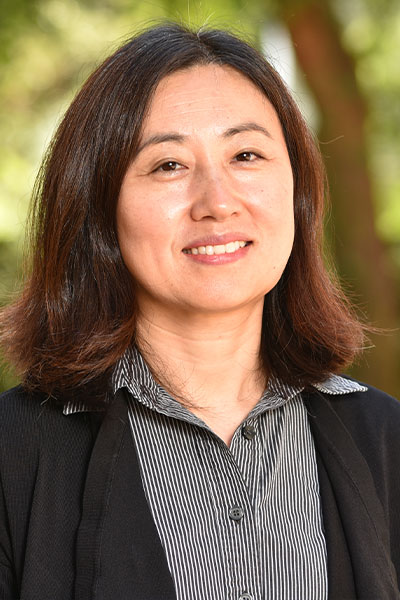
Email: xyang123@ucla.edu
Office: 2000C TLSB
Phone: (310) 206-1812
Website: https://yanglab.ibp.ucla.edu
Biography
Dr. Xia Yang received her Ph.D. in Molecular Genetics and Bioinformatics from Georgia State University and had postdoctoral training in Systems Genetics at UCLA. She was Senior Research Scientist at Rosetta Inpharmatics/Merck & Co. and Director of Systems Biology at Sage Bionetworks prior to returning to UCLA as a faculty member.
Research Interests
Our research focuses on developing and applying multitissue multiomics systems biology approaches to dissect the molecular networks underlying diverse complex diseases, ranging from cardiometabolic diseases to neurodegenerative and neurological disorders, and utilize the systems level networks to guide precision medicine. Through integration of genetic, transcriptional, epigenomic, proteomic, gut microbiota, and phenotypic data from human and rodent populations, we investigate how complex interactions between genetic and environmental risk factors perturb tissue- and cell-specific gene networks which in turn induce variations in disease susceptibility. Subsequently, we use the causal molecular networks of diseases as the basis for therapeutic target identification and biomarker discovery.
Education
B.S., Pharmacy, Shandong University 1993
Ph.D., Molecular Genetics/Bioinformatics, Georgia State University 2003
Selected Publications
Yang X. “Multi-tissue Multi-omics Systems Biology to Dissect Complex Diseases”. Trends in Molecular Medicine, 2020.
Liu W, Venugopal S, Majid S, Ahn IS, Diamante G, Hong J, Yang X*, Chandler SH*. “Single-cell RNA-seq Analysis of the Brainstem of Mutant SOD1 mice Reveals Perturbed Cell Types and Pathways of Amyotrophic Lateral Sclerosis”. Neurobiology of Disease, 141: 104877, 2020.
Rajbhandari P+, Arneson D+, Feng AC, Ahn IS, Diamante G, Zaghari N, Thomas BJ, Vergnes L, Lee SD, Reue K, Smale ST, Yang X, Tontonoz P. “Single Cell Analysis Reveals Immune Cell-Adipocyte Crosstalk Regulating the Transcription of Thermogenic Adipocytes”. eLife 8:e49501, 2019.
Zhang G, Byun HR, Ying Z, Blencowe M, Zhao Y, Hong J, Shu L, Gomez-Pinilla F, Yang X. “Differential Metabolic and Multi-tissue Transcriptomic Responses to Fructose Consumption among Genetically Diverse Mice”. BBA – Molecular Basis of Disease. 1866: 165569, 2020.
Shu L, Meng Q, Tsai B, Diamante G, Chen Y, Mikhail A, Luk H, Ritz B, Allard P, Yang X, “Prenatal Bisphenol A Exposure in Mice Induces Multi-tissue Multi-omics Disruptions Linking to Cardiometabolic Disorders”, Endocrinology, 160 : 409-429, 2019.
Arneson D, Zhuang Y, Byun HR, Ahn IS, Ying Z, Zhang G, Gomez-Pinilla F, Yang X, “Single Cell Molecular Alterations Reveal Pathogenesis and Targets of Concussive Brain Injury”, Nature Communications, 9 : 3894, 2018.
Emilsson V, llkov M, Lamb JR, Finkel N, Gudmundsson EF, Pitts R, Hoover H, Jennings LL, Horman SR, Aspelund T, Shu L, Trifonov V, Gudmundsdottir V, Sigurdsson S, Manolescu A, Zhu J, Lesley SA, To J, Zhang J, Harris TB, Launer LJ, Zhang B, Eiriksdottir G, Yang X, Smith AV, Orth AP, Gudnason V, “Coregulatory Networks of Human Serum Proteins Link Genetics to Disease”, Science, 361 : 769-773, 2018.
Kurt Z, Barrere-Cain R, LaGuardia J, Mehrabian JM, Pan C, Hui ST, Norheim F, Zhou Z, Hasin Y, Lusis AJ, Yang X, “Tissue-specific Pathways and Networks Underlying Sexual Dimorphism in Non-Alcoholic Fatty Liver Disease”, Biology of Sex Differences, 9 : 46- (2018) .
Krishnan KC, Kurt Z, Barrere-Cain R, Sabir S, Das A, Floyd R, Vergnes L, Zhao Y, Che N, Charugundla S, Qi H, Zhou Z, Meng Y, Pan C, Seldin MM, Norheim F, Hui S, Reue K, Lusis, AJ, Yang X., “Integration of Multi-omics Data from Mouse Diversity Panel Highlights Mitochondrial Dysfunction in Non-Alcoholic Fatty Liver Disease”, Cell Systems, 6 : 1-13, 2018.
Shu L, Chen KHK, Zhang G, Huan T, Kurt Z, Zhao Y, Codoni V, Tregouet DA, Yang J, Wilson JG, Luo X, Levy D, Lusis AJ, Liu S, Yang X, “Shared Genetic Regulatory Networks for Cardiovascular Disease and Type 2 Diabetes in Multi-ethnic Populations”, PLOS Genetics, 13 (9): e1007040, 2017.
Alan Garfinkel
Research Interests
Mathematical modeling of cellular and tissue electrophysiology. Analysis of data from experimental and clinical arrhythmias using techniques of nonlinear dynamics (“chaos theory”). Development of pharmacologic and electrophysiologic interventions to prevent or control arrhythmias.
Education
B.A., Math and Philosophy, Cornell University
Ph.D., Philosophy/Mathematics, Harvard University
Fernando Gomez-Pinilla
Fernando Gomez-Pinilla
Professor in Residence
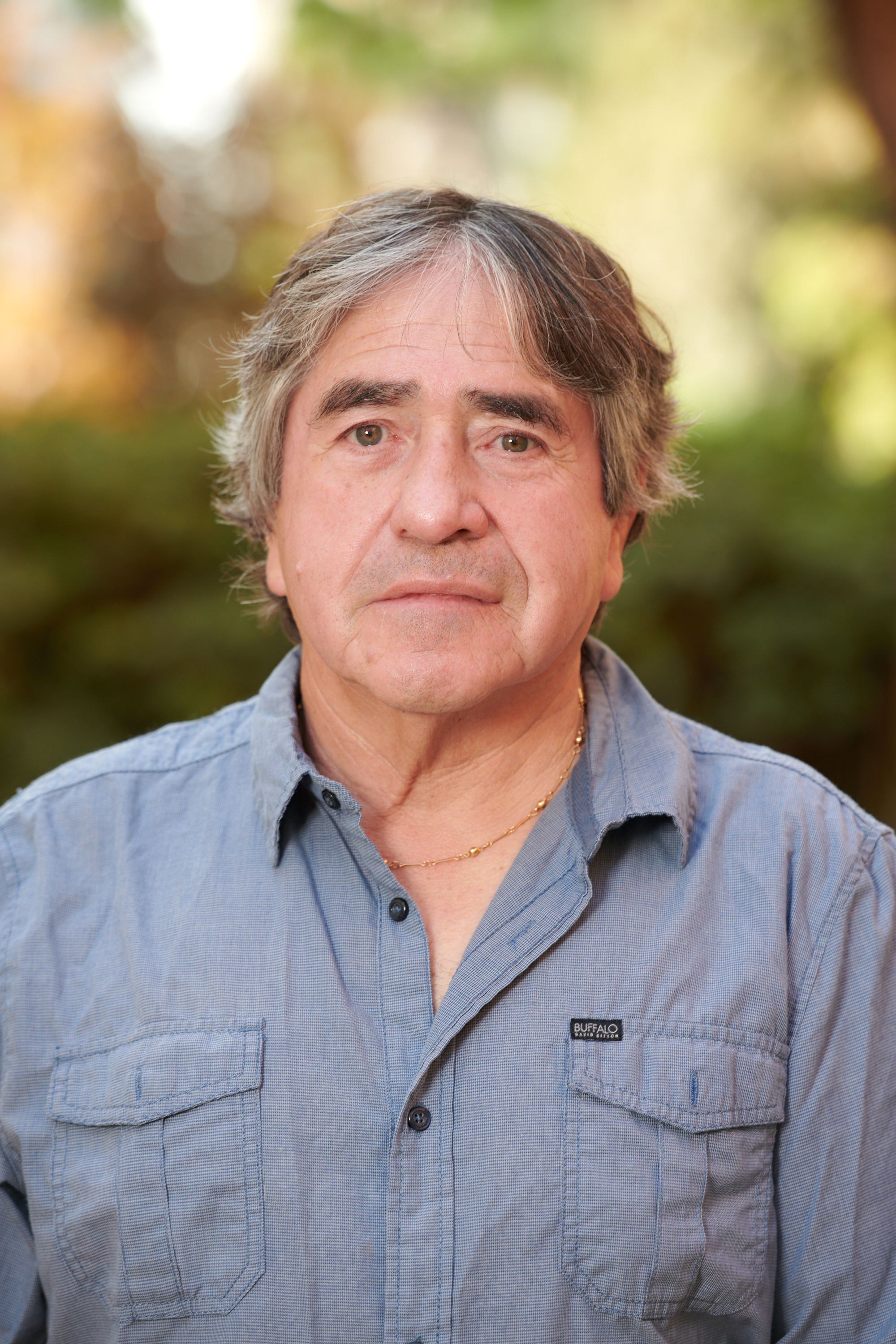
Email: fgomezpi@ucla.edu
Office: 1814 LS
Phone: (310) 206-9693
Website: http://www.physci.ucla.edu/research/GomezPinilla/
Research Interests
Role of Trophic Factors on Activity-dependent Plasticity We are interested on the mechanisms by which environmental factors affect neuronal health. We have found that trophic factors endogenous to the brain and spinal cord can be induced by the practice of select behaviors. We have recently reported that physical activity, learning, and nutritional factors control neurotrophins in the brain. These findings opened the exciting possibility that regulation of trophic factors by behavior can be a pivotal mechanism by which specific experiences can impact the structure and function of the CNS. It may account for the improvement of CNS function after trauma provided by rehabilitative therapies. On the contrary, it may explain the decay in function in aging or degenerative diseases following a lack of stimulation. These two avenues provide direction for my research program: 1) How trophic factors induced by activity can help functional recovery following brain and spinal cord trauma. We are using several exercise models to boost the production of trophic factors in the brain and spinal cord. Our goal is to provide critical information to guide the design of behavioral therapies for the reduction of the severity of insult or disease, and to increase CNS function. 2) We are evaluating the effects of lifestyle on trophic factor production, with resulting effects on circuit remodeling, synaptic function, and cognition. We believe that changes in trophic factor as a result of select experiences can affect neuronal health with profound consequences for cognitive function.
Education
B.A., University of Chile 1977
M.S., Neurobiology, University of Chile 1979
Ph.D., Anatomy & Cell Biology, University of California, Los Angeles 1986
Selected Publications
Molteni R, Wu A, Vaynman S, Ying Z, Barnard RJ, Gomez-Pinilla F., “Exercise reverses the harmful effects of consumption of a high-fat diet on synaptic and behavioral plasticity associated to the action of brain-derived neurotrophic factor”, Neuroscience, 123(2) : 429-40 (2004) .
Wu A, Ying Z, Gomez-Pinilla F., “The interplay between oxidative stress and brain-derived neurotrophic factor modulates the outcome of a saturated fat diet on synaptic plasticity and cognition”, Eur J Neurosci, 19(7): : 1699-707 (2004) .
Vaynman S, Ying Z, Gomez-Pinilla F., “Exercise induces BDNF and synapsin I to specific hippocampal subfields”, J Neurosci Res, 76(3): : 356-62 (2004) .
Griesbach GS, Hovda DA, Molteni R, Wu A, Gomez-Pinilla F., “Voluntary exercise following traumatic brain injury: brain-derived neurotrophic factor upregulation and recovery of function”, Neuroscience, 125(1) : 129-39 (2004) .
Hutchinson KJ, Gomez-Pinilla F, Crowe MJ, Ying Z, Basso DM., “Three exercise paradigms differentially improve sensory recovery after spinal cord contusion in rats”, Brain, 127(Pt 6): : 1403-14 (2004) .
Molteni R, Zheng JQ, Ying Z, Gomez-Pinilla F, Twiss JL., “Voluntary exercise increases axonal regeneration from sensory neurons”, Proc Natl Acad Sci U S A, 101(22) : :8473-8 (2004) .
Ying Z, Roy RR, Edgerton VR, Gomez-Pinilla F., “Voluntary exercise increases neurotrophin-3 and its receptor TrkC in the spinal cord”, Brain Res, 987(1) : 93-9 (2003) .
Vaynman S, Ying Z, Gomez-Pinilla F., “Interplay between brain-derived neurotrophic factor and signal transduction modulators in the regulation of the effects of exercise on synaptic-plasticity”, Neuroscience, 122(3) : 647-57 (2003) .
Gomez-Pinilla F, Ying Z, Roy RR, Molteni R, Edgerton VR., “Voluntary exercise induces a BDNF-mediated mechanism that promotes neuroplasticity”, J Neurophysiol, 88(5) : 2187-95 (2002) .
Molteni, Ying, Z., and Gomez-Pinilla, F., “Differential expression of plasticity-related genes in the rat hippocampus after voluntary wheel running”, Eur. J. Neurosci, 16 (6) : 1107-1124 (2002) .
Elaine Hsiao
Elaine Hsiao
Associate Professor
De Logi Endowed Chair in Biological Sciences
Vice Chair of Postdoctoral Affairs
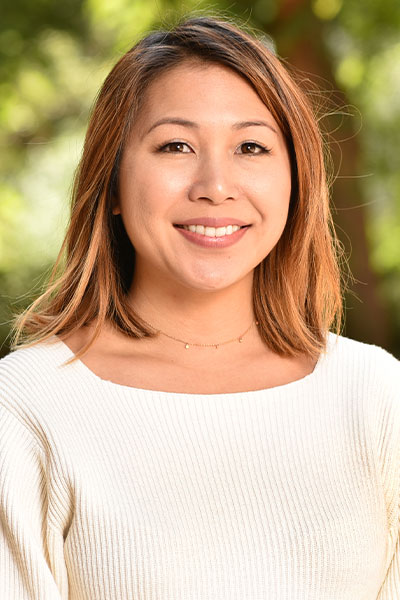
Email: ehsiao@g.ucla.edu
Office: 3825A MSB
Phone: (310) 825-2297
Website: http://hsiao.science/
Biography
Elaine is an Assistant Professor at UCLA, where she is interested in all things microbial, neural and immune. She completed her B.S. in Microbiology, Immunology and Molecular Genetics at UCLA, which sparked her love for molecular biology and bacteria. She went on to complete her Ph.D. in Neurobiology at Caltech, where she studied the neurobiological bases of autism and schizophrenia, with a focus on maternal effects on fetal development, and neuroimmune and microbial contributions to behavioral disorders. Inspired by the amazing and complex interactions between body systems, the Hsiao laboratory is investigating how “peripheral” changes in the immune system and resident microbiota impact the nervous system.
Research Interests
The gut microbiota is emerging as an important modulator of brain function and behavior, as several recent discoveries reveal substantial effects of the microbiome on neurophysiology, neurogenesis, blood brain barrier permeability, neuroimmunity, brain gene expression and animal behavior. Despite these findings supporting a “microbiome-gut-brain axis”, the molecular and cellular mechanisms that underlie interactions between the gut microbiota and brain remain poorly understood. To uncover these, the Hsiao laboratory is mining the human microbiota for microbial modulators of host neuroactive molecules, investigating the impact of microbiota-immune system interactions on neurodevelopment and examining the microbiome as an interface between gene-environment interactions in neurological diseases. We aim to dissect biological circuits for communication between the gut microbiota and nervous system, toward understanding fundamental biological pathways that influence brain and behavior. Situated at the interface of neurobiology, immunology and microbiology, we are using integrative systems approaches to study fundamental questions in biology: What are the effects of the microbiota on the nervous system? How do resident microbes communicate with the nervous system? Which individual species or communities confer particular functional effects? How do microbe-nervous system interactions impact health and disease? What, if any, are the potential evolutionary benefits for microbes to interact with the nervous system? Can rational modification of the microbiota be used to treat symptoms of neurological diseases?
Education
B.S., Microbiology, Immunology & Molecular Genetics, University of California, Los Angeles 2006
Ph.D., Neurobiology, California Institute of Technology 2012
Selected Publications
Lynch JB, Hsiao EY (2019) ‘Microbiomes as sources of emergent host phenotypes.’ Science, 365 (6460): 1405-1409. PMID: 31604267
Fung TC, Vuong HE, Luna CDG, Pronovost GN, Aleksandrova AA, Riley NG, Vavilina A, McGinn J, Rendon T, Forrest LR, Hsiao EY (2019) ‘Intestinal serotonin and fluoxetine exposure modulate bacterial colonization in the gut.’ Nat Microbiol, 4 (12): 2064-2073. PMID: 31477894
Lum GR, Olson CA, Hsiao EY (2020) ‘Emerging roles for the intestinal microbiome in epilepsy.’ Neurobiol Dis, 135 (): 104576. PMID: 31445165
Pronovost GN, Hsiao EY (2019) ‘Perinatal Interactions between the Microbiome, Immunity, and Neurodevelopment.’ Immunity, 50 (1): 18-36. PMID: 30650376
Hsiao E. Y., “The neuroimmune collective, in “Voices: The Next Quarter Century””, Immunity, 50 : 769-777 (2019) .
Olson C. A., Vuong H. E., Yano J. M., Liang Q. Y., Nusbaum D. J., Hsiao E. Y., “The gut microbiota mediates the anti-seizure effects of the ketogenic diet”, Cell, 173 : 1728-1741 (2018) .
Hsiao EY (2018) Decoding states and contexts, in “Setting the Stage for the Next Generation of Neuroscience”. Neuron. 99:11-12. PMID: 30001505.
Fung TC, Olson CA, Hsiao EY (2017) ‘Interactions between the microbiota, immune and nervous systems in health and disease.’ Nat Neurosci, 20 (2): 145-155. PMID: 28092661
Yano JM, Yu K, Donaldson GP, Shastri GG, Ann P, Ma L, Nagler CR, Ismagilov RF, Mazmanian SK, Hsiao EY (2015) ‘Indigenous bacteria from the gut microbiota regulate host serotonin biosynthesis.’ Cell, 161 (2): 264-76. PMID: 25860609
Walter Metzner
Research Interests
Sensory processing/motor control, especially auditory feedback control of vocalization; Behavioral Neuroscience (Neuroethology)
Education
B.S., University of Erlangen, Germany 1981
M.S., Zoology, University of Munich/Germany Department of Zoology 1984
Ph.D., Zoology, University of Munich/Germany Department of Zoology 1989
Ketema Paul
Ketema Paul
Professor
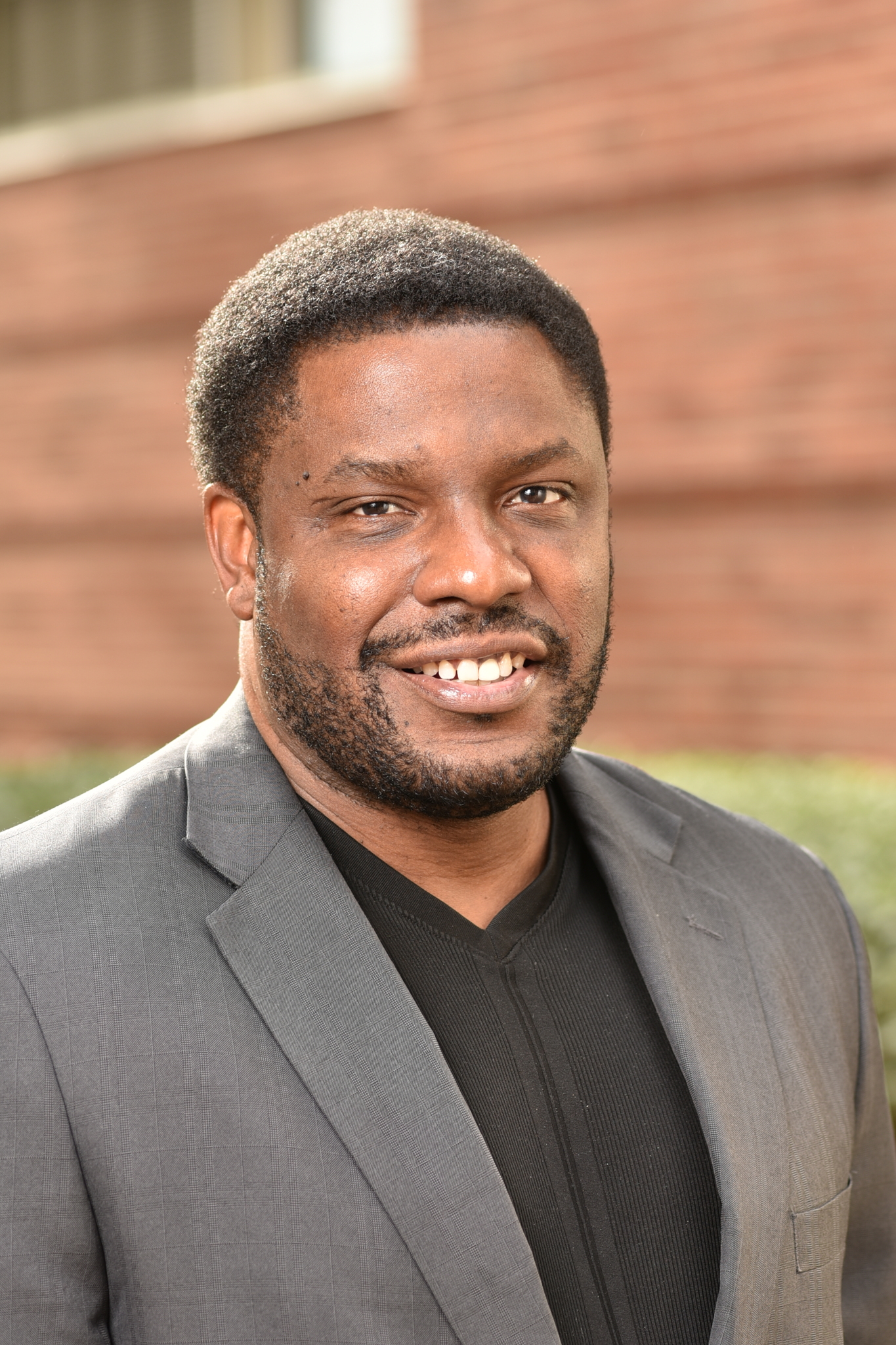
Email: ketema.paul@ucla.edu
Office: 1014 TLSB
Phone: (310) 794-7755
Website: https://uclapaullab.wixsite.com/ucla-paul-lab
Biography
After receiving a bachelor’s degree in biology from Howard University I went on to study neurobiology and circadian biology at Georgia State University in Atlanta, Georgia where I received my doctorate in 2003. I completed a postdoctoral fellowship at Northwestern University in Evanston Illinois in 2006 at the Center for Sleep and Circadian Biology under the guidance of Dr. Fred Turek, after which I accepted a faculty position at the Morehouse School of Medicine (MSM). I spent ten years at MSM and joined the faculty at UCLA in 2016.
Research Interests
My work examines the neural and genetic regulation of sleep regulatory mechanisms. My research program currently has three foci: 1) to examine sex differences in sleep regulatory mechanisms, 2) to investigate the role of circadian molecules on the ability to recover from sleep loss, and 3) to determine how genetic heterogeneity contributes to resilience against the negative effects of sleep loss. My lab has adopted a forward genetics approach in mice to uncover the core genes responsible for sleep-wake regulation and sleep homeostasis. Another avenue of interest in my lab is the circadian expression of sleep-regulatory genes in isolated peripheral blood mononuclear cells from patients with Alzheimer’s Disease. These studies are expected to identify novel sleep-regulatory genes and lead to the development of new therapeutic targets and improved treatments for sleep-related disorders.
Education
B.S., Biology, Howard University 1994
Ph.D., Biology, Georgia State University 2003
Selected Publications
Polyunsaturated Fatty Acids Mend Macrophage Transcriptome, Glycome, and Phenotype in the Patients with Neurodegenerative Diseases, Including Alzheimer’s Disease. J Alzheimers Dis. 2023; 91(1):245-261. Dover M, Moseley T, Biskaduros A, Paulchakrabarti M, Hwang SH, Hammock B, Choudhury B, Kaczor-Urbanowicz KE, Urbanowicz A, Morselli M, Dang J, Pellegrini M, Paul K, Bentolila LA, Fiala M. PMID: 36373322.
Non-rapid eye movement sleep determines resilience to social stress. Elife. 2022 09 23; 11. Bush BJ, Donnay C, Andrews EA, Lewis-Sanders D, Gray CL, Qiao Z, Brager AJ, Johnson H, Brewer HCS, Sood S, Saafir T, Benveniste M, Paul KN, Ehlen JC. PMID: 36149059; PMCID: PMC9586557.
Estrogen-sensitive medial preoptic area neurons coordinate torpor in mice. Nat Commun. 2020 12 11; 11(1):6378. Zhang Z, Reis FMCV, He Y, Park JW, DiVittorio JR, Sivakumar N, van Veen JE, Maesta-Pereira S, Shum M, Nichols I, Massa MG, Anderson S, Paul K, Liesa M, Ajijola OA, Xu Y, Adhikari A, Correa SM. PMID: 33311503; PMCID: PMC7732979.
Sleep loss mediates the effect of stress on nitrergic signaling in female mice. Neurosci Lett. 2021 01 01; 740:135362. Chiem E, Nichols I, Van C, Kori S, Paul K. PMID: 33166635.
Omega-3 Fatty Acids Increase Amyloid-β Immunity, Energy, and Circadian Rhythm for Cognitive Protection of Alzheimer’s Disease Patients Beyond Cholinesterase Inhibitors. J Alzheimers Dis. 2020; 75(3):993-1002. Fiala M, Lau YCC, Aghajani A, Bhargava S, Aminpour E, Kaczor-Urbanowicz KE, Mirzoyan H, Nichols I, Ko MW, Morselli M, Santana J, Dang J, Sayre J, Paul K, Pellegrini M. PMID: 32390637.
Muscle, a conduit to brain for hormonal control of behavior. Horm Behav. 2018 09; 105:58-65.Schlinger BA, Paul K, Monks DA. PMID: 30040953.
Ehlen, J.C., Brager, A.J., Baggs, J., Pinckney, L., Gray, C.L., Debruyne, J.P., Esser, K.A., Takahashi, J.S., Paul, K.N., “Bmal1 function in skeletal muscle regulates sleep”, eLife, 1-15 (2017) .
Clark, K.P., Ehlen, J.C., Paul, K.N., “Race and Gender Disparities in Sleep-Disordered Breathing”, Journal of Sleep Disorders: Treatment & Care, 6 (1): 1-4 (2017) .
Brager A.J., Heemstra, L., Bhambra, R., Ehlen, J.C., Esser, K., Paul, K.N., Novak, C. M., “Homeostatic effects of exercise and sleep on metabolic processes in mice with an overexpressed skeletal muscle clock”, Biochimie, 132 : 161-165 (2017) .
Brager, A.J., Yang, T., Ehlen, J.C., Simon, R.P., Meller, R., Paul, K.N., “Sleep is critical for remote preconditioning-induce neuroprotection”, Sleep, 39 : 2033-2040 (2016) .
Ehlen, J.C., Jones, K.A., Pinckney, L., Gray, C.L. Burette, S., Weinberg, R.J., Evans, J.A., Brager, A., Zylka, M.J., Paul, K.N., Philphot, B.D., Debruyne, J.P, “Maternal Ube3a loss disrupts sleep homeostasis but leaves circadian rhythmicity largely intact”, Sleep, 35 : 13587-13598 (2015) .
Evans, J.A., Suen, T-C., Calif, B., Mitchell, A., Castanon-Cervantes, O., Baker, K.M., Kloehn, I., Baba, K., Teubner, B.J.W., Ehlen, J.C., Paul, K.N., Bartness, T.J., Tosini, G., Leise, T.L., Davidson, A.J, “Shell neurons of the master circadian clock coordinate the phase of tissue clocks throughout the brain and body”, Sleep, 13 : 1-15 (2015) .
Jefferson, F., Ehlen, J.C., Williams, N.S., Paul, K.N, “A dopamine D2-receptor agonist attenuates the ability of stress to alter sleep in mice”, Sleep, 155 : 4411-4421 (2014) .
Ehlen, J.C., Jefferson, F. Brager, A.J., Benveniste, M., Paul, K.N., “Period-Amplitude Analysis Reveals Wake-Dependent Changes in the Electroencephalogram during Sleep Deprivation”, Sleep, 36 : 1723-1735 (2013) .
Brager, A.J., Ehlen, J.C., Castanon-Cervantes, O., Natarajan, D., Delisser, P., Davidson, A., Paul, K.N, “Sleep loss and inflammatory markers under chronic environmental circadian disruption”, Sleep, 8 : 1-8 (2013) .
Ehlen, J.C., Hesse S., Pinckney, L., Paul, K.N, “Sex chromosomes regulate nighttime sleep propensity during recovery from sleep loss”, Sleep, 8 : 1-6 (2013) .
Patricia Phelps
Patricia Phelps
Professor
Vice Chair of Undergraduate Education
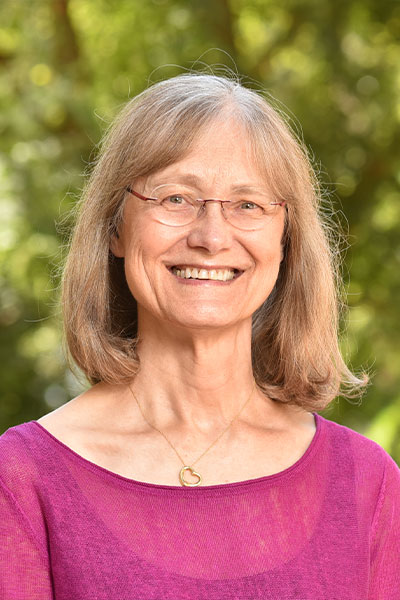
Email: pphelps@physci.ucla.edu
Office: 1024 TLSB
Phone: (310) 825-7264
Website: http://www.physci.ucla.edu/research/phelps/index.php
Biography
Dr. Patty Phelps received her BS and BA degrees from Washington University in St. Louis and her PhD from the Department of Anatomy at UCLA. She then moved to the City of Hope Research Institute in Duarte, California where she received her Postdoctoral training in the Neuroscience Division with Dr. James Vaughn. In 1995, she joined UCLA as an Assistant Professor in the Department of Physiological Science, which is now named the Department of Integrative Biology and Physiology. For many years Dr. Phelps has served as the Vice-Chair for Undergraduate Education in the department and also was the Faculty Director for the Amgen Scholars Program from 2006-2017. Her teaching focuses on the Systems Anatomy class taken by all entering Physiological Science majors and her upper division elective on the “Principles of Nervous System Development.” Based on the extensive multimedia teaching tools she developed and uses in her classes, together with her teaching excellence, she received the UCLA Distinguished Teaching award in 2011.
Research Interests
Our research focuses on the molecular and cellular interactions that control spinal cord development and regeneration after injury. Currently we study the effects of neuronal migratory errors identified in the dorsal horn of the reeler spinal cord. Reelin is a secreted glycoprotein that binds the lipoprotein receptors Vldlr and Apoer2, is internalized, and activates a tyrosine kinase cascade that phosphorylates the intracellular adaptor protein Disabled-1 (Dab1). The Reelin-signaling pathway regulates neuronal positioning in the spinal cord in a cell-specific manner; distinct subsets of neurons sustain migratory errors while others are correctly located. Our laboratory has uncovered migratory errors in the dorsal horn of reeler and dab1 mutants during development and in adults. Importantly, both reeler and dab1 mutants show an increased sensitivity to heat and a profound reduction in mechanical sensitivity. Our findings indicate that Reelin and Dab1-expressing neurons are essential contributors to the normal development of circuits that underlie thermal and mechanical pain processing.
A second focus of the laboratory is to study axon regeneration following complete spinal cord transection. Together with Dr. Edgerton’s lab at UCLA we have completed four extensive studies in which olfactory bulb-derived olfactory ensheathing cells (OECs) were transplanted into the spinal cord after a transection at thoracic level T8. We found that adult spinal rats transplanted with OECs had, relative to control rats receiving medium or fibroblast transplants: 1) improved locomotor performance during hindlimb treadmill stepping, 2) motor evoked potentials induced with transcranial electric stimulation that were lost following re-transection above the original injury, 3) evidence of supraspinal and propriospinal regeneration, and 4) a modification of the lesion site in which OECs align with astrocytes to facilitate axon outgrowth across the injury. Results from tissue culture experiments that mimic the inhibitory glial scar at the lesion site show that OECs directly enhance neurite outgrowth compared to fibroblast controls.
Education
B.A., School of Liberal Arts, Washington University, St. Louis 1970
B.S., School of Medicine, Department of Occupational Therapy, Washington University, St. Louis 1970
Ph.D., Anatomy and Cell Biology, University of California, Los Angeles 1982
Selected Publications
Wang, X, Yvonne, GM, Cilluffo, M, Kim, AS, Basbaum, AI, and Phelps, PE, “Mispositioned Neurokinin-1 receptor-expressing neurons underlie heat hyperalgesia in Disabled-1 mutant mice”, eNeuro, 6 (e0131-19): 1-16 (2019) [link].
Thornton, MA, Mehta, MD, Morad, TT, Ingraham, KL, Khankan, RR, Griffis, KG, Yeung, AK, Zhong, H, Roy, RR, Edgerton, VR, Phelps, PE, “Evidence of axon connectivity across a spinal cord transection in rats treated with epidural stimulation and motor training combined with olfactory ensheathing cell transplantation”, Expt. Neurol., 309 : 119-133 (2018) [link].
Yvone, G.M., H.H. Zhao-Fleming, J.C. Udeochu, C.L. Chavez-Martinez, A. Wang, M. Hirose- Ikeda, and P.E. Phelps, “Disabled-1 dorsal horn neurons co-express Lmx1b and function in nociceptive circuits”, Eur. J. Neurosci, 45 : 733-747 (2017) [link].
Khankan, R.R., K.G. Griffis, J.R. Haggerty-Skeans, H. Zhong, R.R. Roy, V.R. Edgerton, and P.E. Phelps, “Olfactory ensheathing cell transplantation after a complete spinal cord transection mediates neuroprotective and immunomodulatory mechanisms to facilitate regeneration”, J. Neurosci., 36 : 6269-6286 (2016) [link].
Fraley, E.R., Z.D. Burkett, N. F. Day, B.A. Schwartz, P.E. Phelps, and S.A. White, “Mice with Dab1 or Vldlr insufficiency exhibit abnormal neonatal vocalization patterns”, Scientific Report, 6:25807 : 1-12 (2016) [link].
Abadesco, A.D., M. Cilluffo, G.M. Yvone, E.M. Carpenter, B.W. Howell, and P.E. Phelps, “Novel Disabled-1-expressing neurons identified in adult brain and spinal cord”, Eur. J. Neurosci., 39 : 579-592 (2014) .
Wang, X., A.H.Babayan, A.I. Basbaum and P.E. Phelps, “Loss of the Reelin-signaling pathway differentially disrupts heat, mechanical and chemical nociceptive processing”, Neuroscience, 226 : 441-450 (2012) .
Ziegler, M.D., D. Hsu, A. Takeoka, H. Zhong, A. Ramon-Cueto, P.E. Phelps, R.R. Roy, and V.R. Edgerton, “Further evidence of Olfactory Ensheathing Glia facilitating axonal regeneration after a complete spinal cord transection”, Expt. Neurol., 229 : 109-119 (2011) .
Takeoka, T., D.L. Jindrich, C. Munoz-Quiles, H. Zhong, R. van den Brand, D.L. Pham, M.D. Ziegler, A. Ramon-Cueto, R.R. Roy, V.R. Edgerton, and P.E. Phelps, “Axon regeneration can facilitate or suppress hindlimb function after Olfactory Ensheathing Glia transplantation”, J. Neurosci., 31 : 4298-4310 (2011) .
Gina Poe
Gina Poe
Professor
Director of Maximizing Access to Research Careers U*STAR Program
Eleanor Leslie Chair in Innovative Brain Research
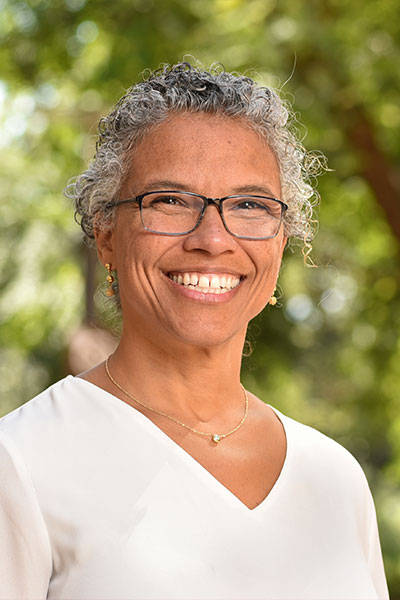
Email: ginapoe@ucla.edu
Office: 1032 TLSB
Phone: (310) 825-8939
Website: poe_sleeplab@weebly.com
Biography
Gina Poe has been working since 1995 on the mechanisms through which sleep serves memory consolidation and restructuring. Dr. Poe is a southern California native who graduated from Stanford University then worked for two post-baccalaureate years at the VA researching Air Force Test Pilots’ brainwave signatures under high-G maneuvers. She then earned her PhD in Basic Sleep in the Neuroscience Interdepartmental Program at UCLA under the guidance of Ronald Harper then moved to the University of Arizona for her postdoctoral studies with Carol Barnes and Bruce McNaughtons looking at graceful degradation of hippocampal function in aged rats as well as hippocampal coding in a 3-D maze navigated in the 1998 space shuttle mission. She brought these multiunit teachings to answer a burning question of whether REM sleep were for remembering or forgetting and found that activity of neurons during REM sleep is consistent both with the consolidation of novel memories and the elimination of already consolidated memories from the hippocampus, readying the associative memory network for new learning the next day. Moving first to Washington State University then to the University of Michigan before joining UCLA in 2016, Poe has over 80 undergraduates, 6 graduate students, and 6 postdoctoral scholars, and has served in university faculty governance as well as leading 5 different programs designed to diversify the neuroscience workforce and increase representation of people of the global majority in the STEM fields. At UCLA she continues research and teaching and Directs the COMPASS-Life Sciences and BRI-SURE programs and co-Directs the MARC-U*STAR program. Nationally she is course director of the Marine Biological Lab’s SPINES course and co-Directs the Society for Neuroscience’s NSP program which earned the nation’s highest mentoring honor in 2018. These programs have served over 600 PhD level trainees over the years.
Research Interests
The Poe lab investigates the mechanisms by which sleep traits serve learning and memory consolidation. Memories are encoded by the pattern of synaptic connections between neurons. We employ tetrode recording and optogenetic techniques in learning animals to see how neural patterns underlying learning are reactivated during sleep, and how activity during sleep influences the neural memory code. Both strengthening and weakening of synapses is important to the process of sculpting a network when we make new memories and integrate them into old schema. Results from our studies suggest that while synaptic strengthening can be efficiently accomplished during the waking learning process, the synaptic weakening part of memory integration requires conditions unique to sleep. The absence of noradrenaline during sleep spindles and REM sleep as well as the low levels of serotonin during REM sleep allow the brain to integrate new memories and to refresh and renew old synapses so that we are ready to build new associations the next waking period. Memory difficulties involved in post-traumatic stress disorder, Schizophrenia, Alzheimer’s disease and even autism involve abnormalities in the sleep-dependent memory consolidation process that my lab studies. Keywords: Sleep, learning and memory, PTSD, memory consolidation, reconsolidation, REM sleep, sleep spindles, Norepinephrine, LTP, depotentiation, reversal learning, optogenetics, electrophysiology, tetrode recordings, hippocampus, prefrontal cortex.
Education
B.A., Human Biology, Stanford University 1987
Ph.D., Neuroscience, University of California, Los Angeles 1995
Selected Publications
Cabrera Y, Holloway J, Poe GR (2020) ‘Sleep Changes Across the Female Hormonal Cycle Affecting Memory: Implications for Resilient Adaptation to Traumatic Experiences.’ J Womens Health (Larchmt), 29 (3): 446-451. PMID: 32186966
Swift KM, Keus K, Echeverria CG, Cabrera Y, Jimenez J, Holloway J, Clawson BC, Poe GR () ‘Sex differences within sleep in gonadally-intact rats.’ Sleep, 2019.PMID: 31784755
Swift KM, Gross BA, Frazer MA, Bauer DS, Clark KJD, Vazey EM, Aston-Jones G, Li Y, Pickering AE, Sara SJ, Poe GR (2018) ‘Abnormal Locus Coeruleus Sleep Activity Alters Sleep Signatures of Memory Consolidation and Impairs Place Cell Stability and Spatial Memory.’ Curr Biol, 28 (22): 3599-3609.e4. PMID: 30393040
Zaborszky L, Gombkoto P, Varsanyi P, Poe GR, Role L, Ananth M, Rajebhosale P, Talmage D, Hasselmo M, Dannenberg H, Minces V, Chiba A, “Specific basal forebrain-cortical cholinergic circuits coordinate cognitive operations”, J Neurosci, 38 (44): 9446-9458 (2018).
Lewis P, Knoblich G, Poe GR, “Recasting reality: how memory replay in sleep boosts creative problem solving”, Trends Cogni Sci, 22 (6): 491-503 (2018).
Bjorness TE, Booth V, Poe GR (2018) ‘Hippocampal theta power pressure builds over non-REM sleep and dissipates within REM sleep episodes.’ Arch Ital Biol, 156 (3): 112-126. PMID: 30324607
Poe GR (2017) ‘Sleep Is for Forgetting.’ J Neurosci, 37 (3): 464-473. PMID: 28100731
Javanbakht, A and Poe, GR, “Behavioral neuroscience of circuits involved in arousal regulation”, The Neurobiology of PTSD, Ressler, K and Liberzon, I(Eds.), 130-147 (2016).
Emrick JJ, Gross BA, Riley BT, Poe GR (2016) ‘Different Simultaneous Sleep States in the Hippocampus and Neocortex.’ Sleep, 39 (12): 2201-2209. PMID: 27748240
Vanderheyden WM, George SA, Urpa L, Kehoe M, Liberzon I, Poe GR (2015) ‘Sleep alterations following exposure to stress predict fear-associated memory impairments in a rodent model of PTSD.’ Exp Brain Res, 233 (8): 2335-46. PMID: 26019008.
Watts A, Gritton HJ, Sweigart J, Poe GR (2012) ‘Antidepressant suppression of non-REM sleep spindles and REM sleep impairs hippocampus-dependent learning while augmenting striatum-dependent learning.’ J Neurosci, 32 (39): 13411-20. PMID: 23015432
Booth V, Poe GR (2006) ‘Input source and strength influences overall firing phase of model hippocampal CA1 pyramidal cells during theta: relevance to REM sleep reactivation and memory consolidation.’ Hippocampus, 16 (2): 161-73. PMID: 16411243
Amy Rowat
Amy Rowat
Professor
Vice Chair of Master’s Program
Marcie H. Rothman Presidential Chair in Food Studies
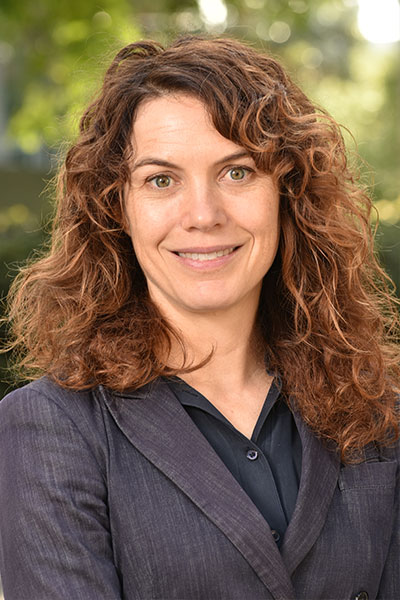
Email: rowat@ucla.edu
Office: 1125 TLSB
Phone: (310) 825-4026
Website: http://www.physci.ucla.edu/research/rowat/RowatLab.html
Biography
Amy Rowat is a biophysicist with degrees from Mount Allison University (B.Sc. Honors Physics; B.A. Asian Studies, French, & Math), the Technical University of Denmark (M.Sc. Chemistry), and the University of Southern Denmark (Ph.D. Physics). She completed postdoctoral training at Harvard University and Brigham-Women’s Hospital, and was a Research Fellow at the German Cancer Research Center (DKFZ). Rowat is Associate Professor and Vice Chair of Graduate Education in the Department of Integrative Biology & Physiology at the University of California at Los Angeles. She is also a member of the UCLA Bioengineering Department, the Center for Biological Physics, the Jonsson Comprehensive Cancer Center, and the Broad Stem Cell Research Center. Rowat is the author of over 50 scientific papers and inventor on over 6 patents. She is the recipient of numerous awards for excellence in research innovation and teaching, including the prestigious National Science Foundation CAREER award. Rowat has pioneered the use of food to teach sophisticated concepts in science, and has both written and lectured on the topic of science and food to hundreds of UCLA students and public audiences. Rowat is also Founder and Director of the Science&Food non-profit organization and leads the Food Pod of the Semel Healthy Campus Initiative Center at UCLA.
Research Interests
Biology is commonly described in terms of specific genes and chemical reactions – transcription, translation – and cells as sacs filled with DNA. But cells are materials and the physical properties of cells are critical for many physiological functions: how cells deform to circulate through the body; how cells resist mechanical stresses – like stretching or squeezing – is important for homeostasis, and also critical in many diseases where cells have altered physical properties.
In the Rowat lab we think about how tissues and cells sense and respond to external cues in terms of cells as materials: how do cells maintain their physical properties and regulate them in response to external cues?
To address this question we have three main research goals:
1) MEASURE: We are developing new mechanotyping technologies, such as self-assembling scaffolds that have tunable mechanics and topology as well as a deformability screening platform – we recently tested thousands of small molecules and found compounds that make cancer cells stiffer and less invasive; this also enables us to develop systems-level knowledge of the ‘mechanome’.
2) UNDERSTAND: Measuring physical properties are not enough. We are defining the molecules and pathways that regulate cellular mechanotype. For example, we discovered that soluble stress hormones activate a pathway that causes cancer cells to increases the forces they use to pull on their surrounding matrix, which makes them invade more quickly. Knowing that molecules are involved is an important first step towards intervening to stop cancer cells from spreading.
3) TRANSLATE: We are harnessing mechanobiology for translation to applications from cancer to cellular agriculture. In addition to molecules we have identified to stop cancer cell invasion, we are also applying our knowledge to tumors as 3D materials. For example, modulating cellular force generation can change tumor porosity, and ultimately increase the accessibility to chemotherapy drugs. While cancer is a main focus of our work, our approaches can be broadly applied across cell types, and we have also investigated cell physical properties in the context of immune cells to cardiac regeneration to neurological movement disorders such as dystonia to cultured meat.
To achieve these research goals, our multidisciplinary team consists of researchers with backgrounds in cell biology, physics, engineering, cancer progression, systems biology, and chemistry.
Education
B.Sc., Physics, Mount Allison University 1998
B.A., Asian Studies, French, & Math, Mount Allison University 1999
M.Sc., Chemistry, Technical University of Denmark 2001
Ph.D., Physics, University of Southern Denmark 2005
Selected Publications
Kim TH, Ly C, Christodoulides A, Nowell CJ, Gunning PW, Sloan EK♯, Rowat AC♯., “Stress hormone signaling through β-adrenergic receptors regulates macrophage mechanotype and function”, FASEB Journal, (2019) .
Gill NK, Ly C, Nyberg KD, Lee L, Qi D, Tofig B, Reis-Sobreiro M, Dorigo O, Rao J, Wiedemeyer R, Karlan B, Lawrenson K, Freeman MR, Damoiseaux R, Rowat AC (2019) ‘A scalable filtration method for high throughput screening based on cell deformability.’ Lab Chip, 19 (2): 343-357. PMID: 30566156
Sobreiro MR, Chen JF, Novitskya T, You S, Morley S, Steadman K, Gill NK, Eskaros A, Rotinen M, Chu CY, Chung LWK, Tanaka H, Yang W, Knudsen BS, Tseng HR, Rowat AC, Posadas EM, Zijlstra A, Di Vizio D, Freeman MR, “Emerin deregulation links nuclear shape instability to metastatic potential”, Cancer Research, 78 (21): 6086-6097 (2018) [link].
Nyberg KD, Bruce SL, Nguyen AV, Chan CK, Gill NK, Kim TH, Sloan EK, Rowat AC, “Predicting cancer cell invasion by single-cell physical phenotyping”, Integrative Biology, 10 : 218-231 (2018) .
Kim TH, Gill NK, Nyberg KD, Nguyen AV, Hohlbauch SV, Geisse NA, Nowell CJ, Sloan EK, Rowat AC (2016) ‘Cancer cells become less deformable and more invasive with activation of β-adrenergic signaling.’ J Cell Sci, 129 (24): 4563-4575. PMID: 27875276
Kim TH, Rowat AC*, Sloan E*, “Neural regulation of cancer: from mechanobiology to inflammation”, Clinical and Translational Immunology, 5 : e78- (2016) .


